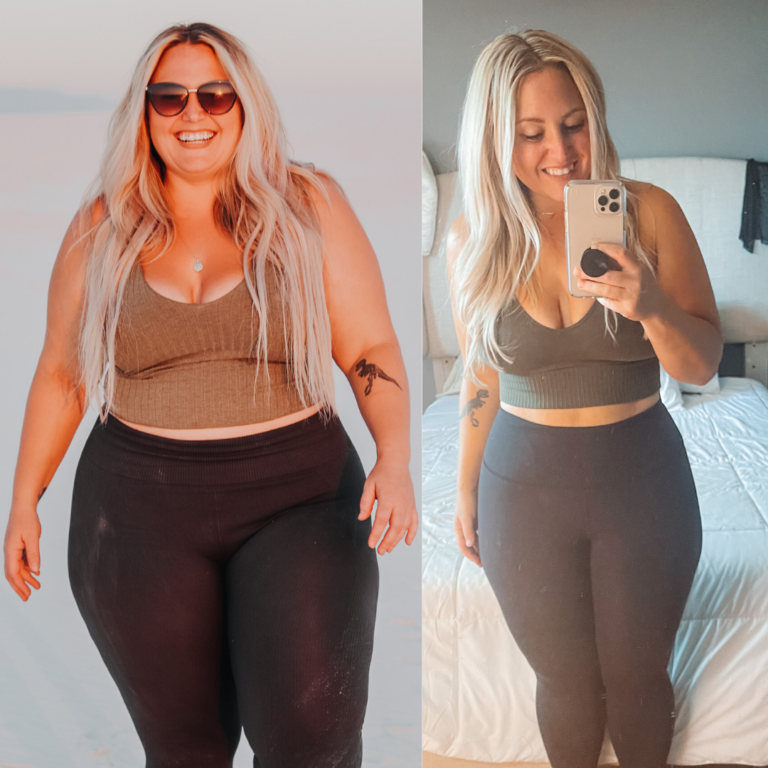How to Lose Weight in 7 Days with Semaglutide
In today’s fast-paced world, many individuals are seeking effective ways to shed excess weight and improve their overall health. One emerging solution gaining popularity is the use of semaglutide, a medication originally developed for managing diabetes but found to have promising weight loss benefits.
In this article, we will explore how semaglutide can help you lose weight in just seven days and provide a comprehensive guide to incorporating it into your weight loss journey.

Understanding Semaglutide
Semaglutide belongs to a class of medications known as GLP-1 receptor agonists. Originally designed to regulate blood sugar levels in individuals with type 2 diabetes, semaglutide has been shown to have a significant impact on weight loss when administered in higher doses. It works by mimicking the actions of a hormone called GLP-1, which regulates appetite and promotes feelings of fullness.
The Science Behind Weight Loss
To understand how semaglutide aids in weight loss, it’s essential to grasp the underlying science. When semaglutide is introduced into the body, it activates GLP-1 receptors in the brain, which help to suppress appetite and reduce food cravings. This leads to a decrease in calorie intake, allowing the body to utilize stored fat for energy, ultimately resulting in weight loss.
Benefits of Using Semaglutide
Using semaglutide for weight loss offers several benefits beyond shedding pounds. Studies have shown that it can lead to improvements in various health markers, including blood pressure, cholesterol levels, and glycemic control. Additionally, semaglutide has been associated with a reduced risk of developing cardiovascular diseases and type 2 diabetes, making it an attractive option for individuals struggling with obesity and related conditions.
Safety and Side Effects
As with any medication, it’s important to consider the safety and potential side effects of semaglutide. While generally well-tolerated, some individuals may experience mild side effects such as nausea, vomiting, or diarrhea. These symptoms typically subside over time as the body adjusts to the medication. It is crucial to consult Dr. Nancie and Dr. Alphonso before starting semaglutide or any weight loss program to ensure it is suitable for your specific needs and medical history.
How to Use Semaglutide for Weight Loss
To effectively use semaglutide for weight loss, it is typically administered as a once-weekly injection. The dosage will vary depending on individual factors, and it’s important to follow the prescribed instructions provided by Dr. Nancie and Dr. Alphonso. Semaglutide injections are usually self-administered and can be conveniently incorporated into your daily routine.
Creating a 7-Day Weight Loss Plan
Now, let’s delve into a comprehensive 7-day weight loss plan that incorporates the use of semaglutide. Remember, while semaglutide can aid in weight loss, it is essential to adopt a holistic approach that includes healthy eating habits, regular exercise, and lifestyle changes for optimal results.

Day 1: Setting Goals and Planning
On the first day of your weight loss journey, it’s essential to set realistic goals and create a well-thought-out plan. This sets the foundation for your success and helps you stay motivated throughout the process. Here’s a closer look at how to effectively set goals and plan for your weight loss journey.
1. Reflect on Your Current Situation: Take some time to reflect on your current dietary habits, physical activity levels, and overall lifestyle. Assess where you stand in terms of your weight, health, and fitness. Understanding your starting point will help you gauge the progress you make along the way.
2. Set Realistic Weight Loss Goals: It’s important to set goals that are attainable and sustainable. Instead of aiming for drastic weight loss in a short period, focus on steady progress. Aim to lose 1-2 pounds per week, as this is considered a healthy and realistic rate of weight loss.
3. Consider Your Individual Needs: Everyone is unique, so it’s crucial to consider your individual needs when setting goals. Take into account factors such as your age, gender, body composition, and any underlying health conditions. Consulting with Dr. Nancie and Dr. Alphonso or registered dietitian can provide valuable guidance in this regard.
4. Make SMART Goals: Use the SMART goal-setting framework to make your goals specific, measurable, achievable, relevant, and time-bound. For example, instead of saying “I want to lose weight,” a SMART goal would be “I will lose 10 pounds in the next 12 weeks by following a balanced diet and exercising for 30 minutes five times a week.”
5. Break Down Your Goals: Breaking down your main weight loss goal into smaller, achievable milestones can make the process less overwhelming. For instance, if your ultimate goal is to lose 50 pounds, set smaller milestones of 5 or 10 pounds at a time. Celebrating these milestones along the way will help keep you motivated.
6. Identify Potential Challenges: Anticipate any challenges you may face during your weight loss journey. This could include social events, cravings, lack of time, or emotional triggers. By identifying these challenges in advance, you can plan strategies to overcome them and stay on track.
7. Create a Detailed Plan: Now that you have your goals in place, it’s time to create a detailed plan of action. Break your plan down into key areas, such as nutrition, exercise, hydration, and self-care. Consider the following elements:
- Nutrition: Assess your current eating habits and identify areas for improvement. Plan balanced meals that include a variety of whole foods, such as fruits, vegetables, lean proteins, whole grains, and healthy fats. Consider portion control and mindful eating techniques to prevent overeating.
- Exercise: Determine the type of physical activity you enjoy and that suits your lifestyle. Aim for a combination of cardiovascular exercises, strength training, and flexibility exercises. Start with manageable workouts and gradually increase intensity and duration over time.
- Hydration: Make sure to include proper hydration as part of your plan. Set a goal for daily water intake and limit the consumption of sugary beverages. Staying hydrated supports overall health and aids in weight loss.
- Self-Care: Self-care is essential for a successful weight loss journey. Incorporate stress management techniques, prioritize sleep, and engage in activities that bring you joy and relaxation. Taking care of your mental and emotional well-being will help you stay motivated and focused.
8. Track Your Progress: Monitoring your progress is crucial for staying motivated and making adjustments as needed. Keep a journal or use a mobile app to track your food intake, exercise sessions, and measurements. Regularly review your progress to identify what’s working and what needs improvement.
Setting goals and planning for your weight loss journey on the first day lays a solid foundation for success. Remember to be patient and kind to yourself throughout the process. Embrace the journey as an opportunity to cultivate a healthy lifestyle that supports long-term well-being.

Day 2: Establishing Healthy Eating Habits
On the second day of your weight loss journey, it’s time to focus on establishing healthy eating habits. The food choices you make play a significant role in your weight loss and overall well-being. By incorporating nutrient-dense foods into your diet and practicing mindful eating, you can fuel your body with the right nutrients and develop a sustainable approach to eating. Here’s how you can establish healthy eating habits:
1. Emphasize Nutrient-Dense Foods: Make it a priority to include nutrient-dense foods in your meals. These are foods that provide a high amount of essential nutrients while being relatively low in calories. Aim to incorporate plenty of fruits, vegetables, lean proteins, and whole grains into your diet. These foods are rich in vitamins, minerals, fiber, and antioxidants, which support your overall health.
2. Limit Processed Foods: Processed foods, such as fast food, sugary snacks, and packaged meals, are typically high in added sugars, unhealthy fats, and sodium. These empty calories can hinder your weight loss efforts and negatively impact your health. Instead, opt for whole, unprocessed foods as much as possible. Choose fresh ingredients and prepare your meals at home to have better control over the ingredients and portion sizes.
3. Hydrate with Water: Stay hydrated by making water your primary beverage choice. Water helps to flush out toxins, supports digestion, and can help you feel full, reducing the chances of overeating. Keep a water bottle with you throughout the day as a reminder to drink water regularly.
4. Plan Your Meals in Advance: Planning your meals in advance can help you make healthier choices and avoid impulsive, unhealthy options. Take some time at the beginning of each week to plan your meals, create a grocery list, and prepare some meals or ingredients ahead of time. Having nutritious options readily available can prevent you from reaching for convenient, but less healthy, alternatives.
5. Practice Mindful Eating: Engage in mindful eating to develop a healthier relationship with food. Slow down and savor each bite, paying attention to the flavors, textures, and sensations. Avoid distractions while eating, such as screens or multitasking, and focus on the experience of nourishing your body. Listen to your body’s hunger and satiety cues, eating until you’re satisfied but not overly full.
6. Portion Control: Be mindful of portion sizes to avoid consuming excess calories. Use smaller plates and bowls to create the illusion of a fuller plate. Pay attention to your body’s signals of fullness and stop eating when you feel satisfied, rather than eating until you’re uncomfortably full.
7. Seek Variety and Balance: Incorporate a variety of foods from different food groups to ensure you’re getting a wide range of nutrients. Aim for a balanced plate that includes a source of lean protein, whole grains, and plenty of colorful fruits and vegetables. Experiment with different recipes and flavors to keep your meals interesting and enjoyable.
8. Seek Professional Guidance: If you feel overwhelmed or unsure about how to establish healthy eating habits, consider seeking guidance from a registered dietitian or nutritionist. They can provide personalized advice, meal planning tips, and help you navigate any specific dietary needs or restrictions you may have.
Remember, establishing healthy eating habits is a long-term commitment. Focus on progress rather than perfection and be kind to yourself along the way. Embrace the opportunity to explore new flavors, nourish your body, and develop a sustainable approach to eating.

Day 3: Incorporating Exercise
On the third day of your weight loss journey, it’s time to focus on incorporating exercise into your routine. Regular physical activity not only helps boost your metabolism and burn calories but also offers numerous benefits for your overall health and well-being.
By engaging in activities you enjoy and aiming for a minimum of 30 minutes of moderate-intensity exercise each day, you can make exercise an enjoyable and sustainable part of your weight loss journey. Here’s how you can incorporate exercise into your daily routine:
1. Choose Activities You Enjoy: Engage in physical activities that you genuinely enjoy. This could be brisk walking, jogging, cycling, dancing, swimming, or participating in group fitness classes. By choosing activities that you find fun and enjoyable, you’re more likely to stick with them in the long run.
2. Start Slow and Gradually Increase Intensity: If you’re new to exercise or have been inactive for a while, it’s important to start slowly and gradually increase the intensity and duration of your workouts. This allows your body to adapt and reduces the risk of injury. Begin with shorter sessions and lower intensity and gradually work your way up as your fitness level improves.
3. Aim for Moderate-Intensity Exercise: Strive to engage in at least 30 minutes of moderate-intensity exercise on most days of the week. Moderate-intensity activities get your heart rate up and make you breathe harder, but you should still be able to carry on a conversation. Examples include brisk walking, cycling at a moderate pace, or swimming laps.
4. Mix Cardiovascular and Strength Training: Incorporate a combination of cardiovascular exercise and strength training into your routine. Cardiovascular exercises, such as jogging or cycling, help burn calories and improve cardiovascular health. Strength training, including exercises with weights or resistance bands, helps build lean muscle mass, which can increase your metabolism and enhance overall body composition.
5. Be Consistent: Consistency is key when it comes to exercise. Aim to make physical activity a regular part of your daily routine. Schedule your workouts and treat them as non-negotiable appointments with yourself. Even on busy days, try to find pockets of time for short bursts of activity, such as taking the stairs instead of the elevator or going for a quick walk during your lunch break.
6. Set Realistic Goals: Set achievable goals for your exercise routine. It could be completing a certain number of workouts per week, gradually increasing the duration or intensity of your workouts, or participating in an event like a charity run or fitness challenge. Having goals gives you something to work towards and helps maintain motivation.
7. Listen to Your Body: Pay attention to your body’s signals and adjust your exercise routine accordingly. If you feel overly fatigued or experience pain or discomfort, take a rest day or opt for lighter activities such as gentle stretching or yoga. Remember that rest and recovery are just as important as the exercise itself.
8. Stay Hydrated: Drink plenty of water before, during, and after your workouts to stay hydrated. Proper hydration supports optimal performance and helps regulate body temperature. If you’re engaging in intense or prolonged exercise, consider sports drinks or electrolyte-enhanced beverages to replenish lost fluids and electrolytes.
Remember, the goal is to find joy in movement and make exercise a sustainable part of your lifestyle. Celebrate your progress and focus on the positive changes exercise brings to your overall health and well-being.

Day 4: Managing Portion Sizes
On the fourth day of your weight loss journey, it’s time to focus on managing portion sizes. Controlling portion sizes is a crucial aspect of weight management, as it helps prevent overeating and allows you to maintain a calorie deficit.
By adopting mindful eating habits, using smaller plates and bowls, and paying attention to your body’s signals of fullness, you can develop a healthier relationship with food and support your weight loss goals. Here’s how you can effectively manage portion sizes:
1. Understand Portion vs. Serving Size: Differentiating between portion size and serving size is essential. A portion size refers to the amount of food you choose to eat at one time, while a serving size is a standardized measurement of food, often listed on nutrition labels. Be mindful of your portion sizes and aim to align them with appropriate serving sizes to avoid overeating.
2. Use Smaller Plates and Bowls: Trick your mind into feeling satisfied with smaller portions by using smaller plates and bowls. This simple visual trick creates the illusion of a fuller plate and can help you control your food intake. Research suggests that people tend to eat less when their plates or bowls are smaller, without feeling deprived.
3. Fill Half Your Plate with Vegetables: Make vegetables the star of your meals by filling at least half of your plate with a colorful variety. Vegetables are low in calories and high in nutrients, fiber, and water content, which can help you feel full and satisfied. Experiment with different cooking methods and seasonings to make them more appealing.
4. Measure and Weigh Foods: While it may seem tedious at first, measuring and weighing your foods can provide a more accurate understanding of portion sizes. Use measuring cups, spoons, or a kitchen scale to ensure you’re consuming the appropriate amounts of different food groups. Over time, you’ll develop a better sense of portion sizes and be able to eyeball them more accurately.
5. Pay Attention to Hunger and Fullness: Listen to your body’s signals of hunger and fullness. Eat when you’re physically hungry and stop when you feel comfortably satisfied, but not overly full. Avoid eating for emotional or external reasons, such as boredom or stress. Mindful eating involves savoring each bite, eating slowly, and focusing on the taste, texture, and enjoyment of the food.
6. Practice Mindful Portion Control: Be mindful of portion sizes when dining out or eating pre-packaged meals. Restaurants often serve larger portions, so consider sharing a meal or opting for an appetizer-sized portion. When consuming packaged foods, check the serving size on the nutrition label and portion it out accordingly, rather than eating straight from the container.
7. Be Mindful of Calorie-Dense Foods: Calorie-dense foods, such as oils, butter, nuts, and sweets, can quickly add up in terms of calories. While these foods can be enjoyed in moderation, it’s important to be mindful of portion sizes. Use small amounts of fats and oils when cooking, and savor treats in smaller portions or choose healthier alternatives.
8. Seek Support and Accountability: Consider seeking support from a registered dietitian or weight loss program that can provide guidance on portion control and personalized strategies. Additionally, accountability from a friend, family member, or support group can help you stay on track and make mindful portion control a sustainable habit.
Remember, managing portion sizes is about finding a balance between nourishing your body and enjoying your meals. By practicing portion control, you can still savor your favorite foods while working towards your weight loss goals.

Day 5: Staying Hydrated
On the fifth day of your weight loss journey, it’s important to focus on staying hydrated. Proper hydration is essential for overall health, and it plays a significant role in weight management.
By drinking an adequate amount of water throughout the day, you can support digestion, promote a healthy metabolism, and prevent unnecessary snacking. Here’s why staying hydrated is crucial and how you can incorporate it into your routine:
1. Importance of Hydration for Weight Loss: Staying hydrated is vital for weight management. Sometimes, our body’s signals for thirst can be mistaken for hunger, leading to unnecessary snacking or overeating. By staying properly hydrated, you can better differentiate between thirst and hunger, preventing the consumption of excess calories. Water also helps to support optimal digestion, which aids in nutrient absorption and the elimination of waste products.
2. Drink Water Throughout the Day: Make it a habit to drink water consistently throughout the day. Keep a reusable water bottle with you as a reminder to hydrate regularly. Sip on water during meals, between meals, and during physical activity. Aim to drink at least 8 cups (64 ounces) of water per day, but individual needs may vary depending on factors such as activity level, climate, and personal preference.
3. Opt for Water as Your Primary Hydration Source: Water should be your primary source of hydration. It is calorie-free, readily available, and essential for maintaining proper bodily functions. By choosing water over sugary beverages like soda, juice, or energy drinks, you can avoid unnecessary added sugars and excess calories that can hinder your weight loss efforts.
4. Infuse Water with Flavor: If you find plain water less appealing, you can infuse it with natural flavors. Add slices of fresh fruits such as lemon, lime, cucumber, or berries to your water to give it a refreshing taste without added sugars or artificial sweeteners. Experiment with different combinations to find flavors that you enjoy.
5. Establish a Hydration Routine: Create a hydration routine that works for you. Start your day with a glass of water, and make it a habit to drink water at regular intervals throughout the day. Set reminders on your phone or use hydration tracking apps to help you stay on track.
6. Monitor Urine Color: A simple way to gauge your hydration status is to monitor the color of your urine. Aim for a pale, straw-like color, which indicates adequate hydration. Dark-colored urine may suggest dehydration and a need for increased water intake.
7. Hydrate Before, During, and After Exercise: During exercise, your body loses water through sweat. To stay properly hydrated, drink water before, during, and after your workouts. This helps replenish the fluids lost and supports optimal exercise performance. Consider drinking electrolyte-enhanced beverages or consuming foods rich in electrolytes if you engage in intense or prolonged exercise.
8. Be Mindful of Hydration in Different Environments: Pay attention to your hydration needs in different environments, such as hot weather or air-conditioned spaces. In hot weather or when engaging in outdoor activities, increase your water intake to compensate for the additional fluid loss due to perspiration. In air-conditioned spaces, where the air tends to be drier, you may need to hydrate more frequently to prevent dehydration.
Remember, staying hydrated is not only beneficial for weight management but also for overall health. By prioritizing water as your main source of hydration and establishing a consistent routine, you can support your weight loss goals and maintain optimal well-being.
Day 6: Getting Enough Sleep
On the sixth day of your weight loss journey, it’s time to focus on getting enough sleep. Adequate sleep is crucial for overall health and plays a significant role in weight management. By aiming for 7-8 hours of quality sleep each night, you can support your weight loss efforts, regulate hunger and satiety hormones, and reduce the risk of overeating. Here’s why getting enough sleep is important and how you can prioritize it:
1. The Connection Between Sleep and Weight Management: Sleep and weight management are closely intertwined. Research has shown that insufficient sleep can disrupt the balance of hunger-regulating hormones, leading to increased appetite and cravings for unhealthy foods. Lack of sleep also affects metabolism, making it harder to lose weight and maintain a healthy weight.
2. Aim for 7-8 Hours of Sleep: Make it a priority to get 7-8 hours of quality sleep each night. While individual sleep needs may vary slightly, this range is generally considered optimal for most adults. Experiment with different sleep durations to find what works best for you, but avoid consistently getting less than 7 hours of sleep, as it can have negative effects on your weight and overall well-being.
3. Establish a Consistent Sleep Routine: Create a consistent sleep routine by going to bed and waking up at the same time each day, even on weekends. This helps regulate your body’s internal clock, known as the circadian rhythm, and promotes better sleep quality. Create a relaxing bedtime routine that signals to your body that it’s time to wind down, such as reading a book, taking a warm bath, or practicing relaxation techniques.
4. Create a Sleep-Friendly Environment: Ensure that your sleep environment is conducive to quality sleep. Make your bedroom comfortable, cool, quiet, and dark. Use blackout curtains or an eye mask, earplugs or white noise machines, and comfortable bedding to create an optimal sleep environment. Minimize exposure to electronics and stimulating activities before bed, as the blue light emitted from screens can interfere with sleep quality.
5. Avoid Stimulants and Heavy Meals Before Bed: Limit the consumption of stimulants, such as caffeine and nicotine, particularly in the afternoon and evening. These can interfere with falling asleep and reduce sleep quality. Additionally, avoid heavy meals close to bedtime, as digestion can disrupt sleep and lead to discomfort.
6. Create a Relaxing Bedtime Routine: Establish a relaxing bedtime routine to help signal to your body that it’s time to sleep. Engage in activities that promote relaxation, such as reading a book, practicing gentle stretching or yoga, listening to calming music, or engaging in deep breathing exercises. Avoid engaging in stimulating or stressful activities close to bedtime.
7. Manage Stress Levels: High stress levels can interfere with sleep quality. Implement stress management techniques, such as meditation, mindfulness, journaling, or engaging in hobbies you enjoy, to promote relaxation and reduce the impact of stress on your sleep. If necessary, seek support from a mental health professional to help manage stress and improve sleep quality.
8. Prioritize Sleep as Self-Care: View sleep as an essential component of your self-care routine. Understand that getting enough quality sleep is just as important as eating well and exercising for overall health and weight management. Prioritize your sleep needs and make it a non-negotiable part of your daily routine.
Remember, adequate sleep is not only important for weight management but also for overall physical and mental well-being. By prioritizing sleep, you can support your weight loss goals and enhance your overall quality of life.

Day 7: Maintaining Your Progress
Congratulations! You have reached the seventh day of your weight loss journey. On this day, it’s time to reflect on your achievements and focus on maintaining the healthy habits you have cultivated throughout the week.
Remember, weight loss is a journey, and maintaining your progress requires consistency, motivation, and ongoing commitment. Here’s how you can continue making positive choices for long-term success:
1. Celebrate Your Achievements: Take a moment to acknowledge and celebrate your achievements so far. Reflect on the progress you have made, both big and small. Celebrate the positive changes you have implemented in your eating habits, physical activity, hydration, sleep, and overall lifestyle. Recognize the effort you have put in and be proud of yourself.
2. Stay Motivated: Maintain your motivation by reminding yourself of the reasons why you embarked on this weight loss journey. Set new goals to keep yourself motivated and excited about the future. Whether it’s reaching a specific weight, improving your fitness level, or enhancing your overall well-being, find what motivates you and use it as fuel to continue your progress.
3. Seek Support: Surround yourself with supportive individuals who understand and encourage your goals. Share your journey with loved ones, friends, or a support group who can provide support, accountability, and motivation. Having a strong support system can make a significant difference in maintaining your progress and keeping you motivated during challenging times.
4. Embrace a Balanced Lifestyle: Focus on adopting a balanced lifestyle rather than following a short-term, restrictive approach. Continue to prioritize nutrient-dense foods, regular physical activity, hydration, quality sleep, and stress management. Remember that sustainable weight loss is about making lasting lifestyle changes, rather than relying on quick fixes or extreme measures.
5. Practice Mindful Eating: Continue practicing mindful eating, paying attention to your body’s hunger and fullness cues. Listen to your body and eat when you’re physically hungry, stopping when you feel satisfied. Be mindful of portion sizes, make nutritious food choices, and savor the flavors and textures of your meals. Avoid restrictive diets or depriving yourself, as they can lead to an unhealthy relationship with food.
6. Be Consistent: Consistency is key to maintaining your progress. Stick to the healthy habits you have developed throughout the week. Stay committed to your exercise routine, mindful eating, hydration, and self-care practices. Even if you have occasional setbacks, remember that every day is an opportunity to make positive choices and get back on track.
7. Monitor and Adjust: Regularly monitor your progress and make adjustments as needed. Keep track of your weight, measurements, and how you feel both physically and mentally. If you notice a plateau or a need for change, consult with Dr. Nancie and Dr. Alphonso or registered dietitian who can provide guidance on adjusting your approach.
8. Embrace the Journey: Embrace the fact that weight loss is a journey with ups and downs. Be patient and kind to yourself. Understand that setbacks and challenges are a normal part of the process. Learn from them, make adjustments, and keep moving forward with determination and resilience.
Remember, maintaining your progress is about making sustainable lifestyle changes that support your overall health and well-being. Stay focused, seek support, and continue to make positive choices as you move forward on your weight loss journey.
Start Your Semaglutide Weight Loss Journey Today
Losing weight in just seven days may seem like a challenging task, but with the aid of semaglutide and a comprehensive weight loss plan, it is indeed achievable. Remember to consult with Dr. Nancie and Dr. Alphonso before incorporating semaglutide into your routine. Combine its benefits with healthy eating habits, regular exercise, and lifestyle changes for sustainable weight loss and improved overall well-being.
FAQs:
- Is semaglutide a magic weight loss pill? No, semaglutide is not a magic weight loss pill. It is a medication that, when combined with healthy habits, can aid in weight loss.
- Can I use semaglutide without a prescription? No, semaglutide is a prescription medication that should be used under the guidance of Dr. Nancie and Dr. Alphonso.
- Are there any long-term side effects of semaglutide? Long-term side effects of semaglutide are still being studied. However, it is generally considered safe when used as prescribed.
- Can semaglutide be used for weight loss in individuals without diabetes? Yes, semaglutide can be used for weight loss in individuals without diabetes, as it has shown effectiveness in promoting weight loss.
- Will the weight loss achieved with semaglutide be maintained after stopping the medication? Maintaining weight loss after stopping semaglutide depends on the individual’s commitment to maintaining healthy habits and lifestyle changes. It is essential to continue following a balanced diet and exercising regularly for long-term success.
What To Do Next…
For people who want to stop struggling with their weight

We Now Have FDA Approved Semaglutide Weight Loss in Sarasota and Bradenton Florida. Book a free consultation and find out about the semaglutide cost and semaglutide side effects. Semaglutide injection are available after your free consultation.






